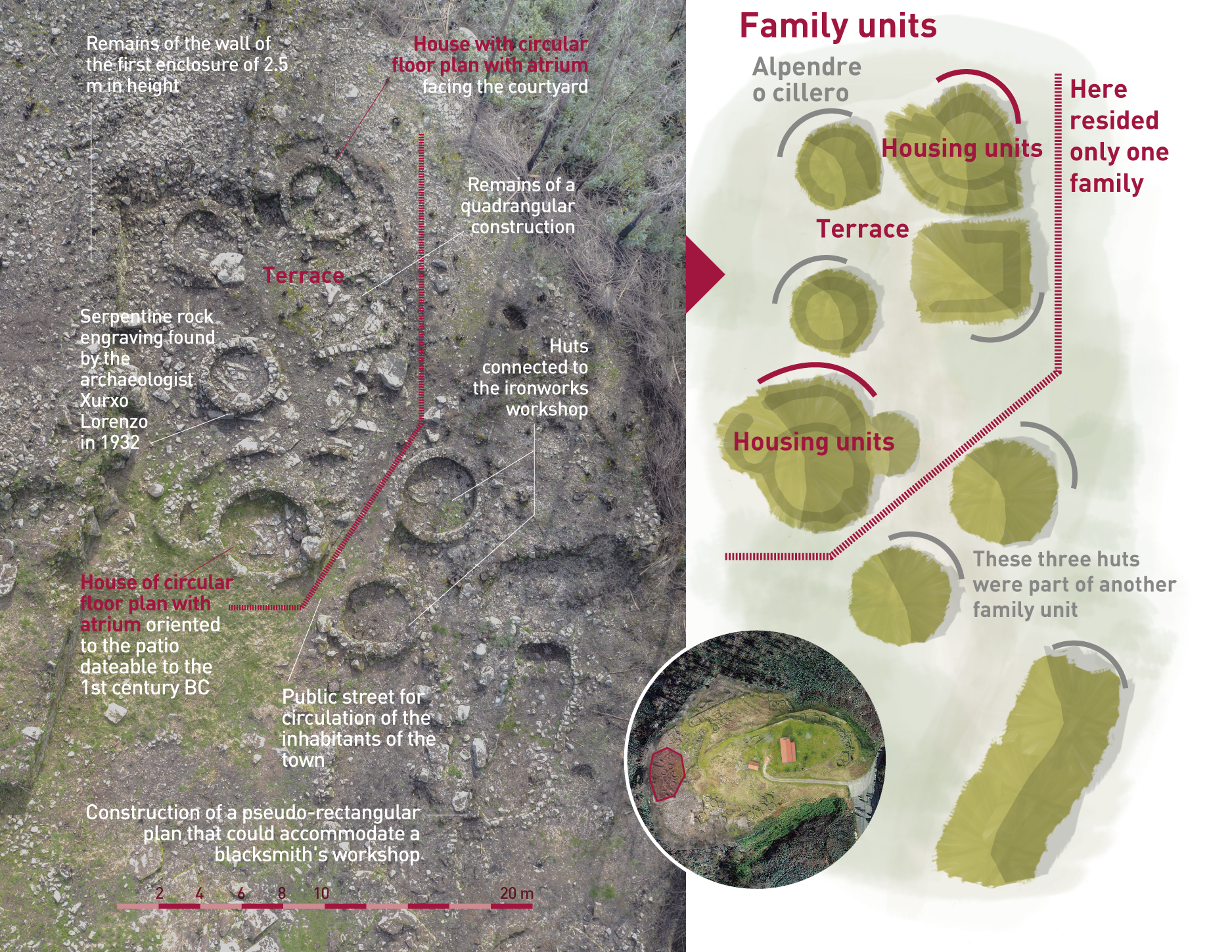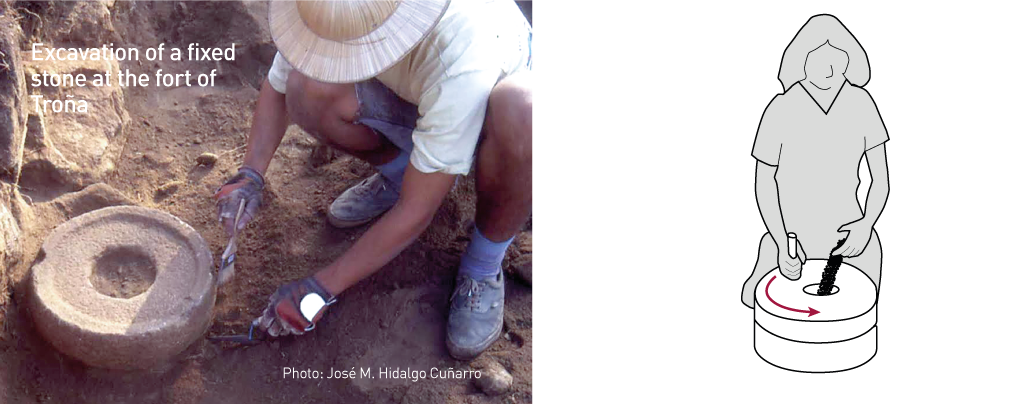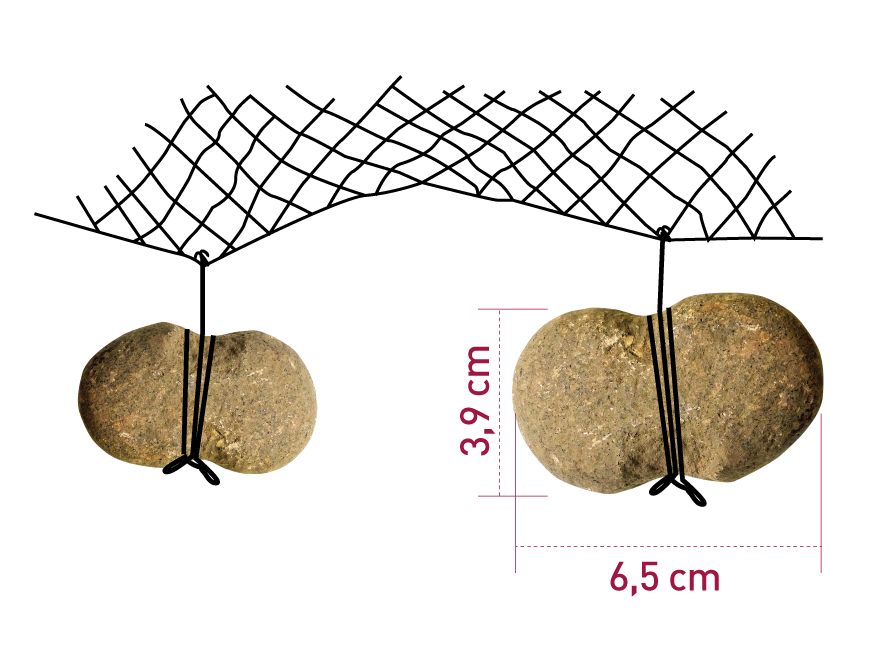


At the coastal forts, but also in those located in the interior of the river valleys, material evidence of the practice of fishing by the Gallaeci was documented.
Remains of fish bones, metallic hooks and ballast weights show that fishing was part of the habitual diet of its inhabitants.

In Troña a good number of cut weights were found, which were probably used as ballast weights or hooks for fishing in the Tea River. They could also be used as loom weights in the context of making domestic handicrafts, although the appearance of ceramic loom weights would make this interpretation less plausible. It was small granite or quartzite of elongated shape (between 6 and 8 cm) that was manually bent at medium height, mainly on the smaller sides, in order to favour the tying of ropes made from plants such as hemp or the esparto straw.